
The negotiations between Greece and the ‘troika’ of creditors (the IMF, the European Commission and the ECB) have seen many twists and turns before breaking down on 26 June. Throughout, both sides have sought to give as little as possible while seeking a compromise. Both sides have claimed that their position is reasonable, even though a gulf has remained between them.
What has been playing out is a high-stakes game, where the optimum outcome for each side is quite different.
Greece seeks bailout terms that would allow it to achieve a smaller primary budget surplus (but still a surplus in the midst of a deep recession). The surplus would be achieved largely through tax rises on the wealthy rather than further cuts that would hit the poor hard. It is also seeking a substantial amount of debt forgiveness to make servicing the remaining debt possible.

The troika is seeking a larger budget surplus than the Greeks are willing to contemplate. This, it maintains, should be achieved largely through additional cuts in government expenditure, including further reductions in pensions and in public-sector wages.
Both sides used threats and promises as the negotiations became more and more acrimonious.
The troika threatened to withhold the final €7.2bn of the bailout necessary to pay the €1.6bn due to the IMF on 30 June, unless the Greeks accepted the terms of the austerity package put to them. The Greek Prime Minister, Alexis Tsipras, in rejecting the proposals, called a referendum on the package. This threatens the stability of the eurozone as a No vote, if it led to a Greek exit from the eurozone, could undermine confidence in monetary union. After all, if Greece could be forced out, other countries facing severe difficulties might also be forced out at some point in the future. Once a country leaves the eurozone, the monetary union becomes more like a system of pegged exchange rates. And pegged exchange rates are open to destabilising speculation at times of economic divergence.
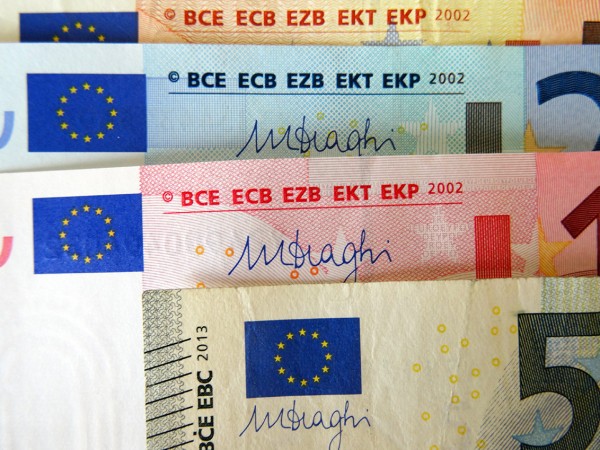 A Greek exit from the euro (dubbed ‘Grexit’) is seen as undesirable by most Greeks and by most politicians in the rest of Europe. The optimum for both sides collectively would be a compromise, which saw more modest cuts by Greece and the eurozone remaining intact. By both sides seeking to maximise their own position, the Nash equilibrium is certainly not the best outcome.
A Greek exit from the euro (dubbed ‘Grexit’) is seen as undesirable by most Greeks and by most politicians in the rest of Europe. The optimum for both sides collectively would be a compromise, which saw more modest cuts by Greece and the eurozone remaining intact. By both sides seeking to maximise their own position, the Nash equilibrium is certainly not the best outcome.
But as long as the troika believes that the Greeks are likely to vote Yes to the proposed bailout terms, it still hopes to get the outcome that is best from its point of view – an outcome that would probably involve regime change. And as long as the Greek government hopes that a No vote will force the troika to think again and come back with less austere proposals, it still hopes to get the outcome that is best from its point of view. But the outcome of this game of ‘chicken’ could well be Grexit and a Nash equilibrium that neither side wants.
 But while the endgame is being played out by politicians, people in Greece are suffering. Policies of severely depressing aggregate demand to turn a large budget deficit into a primary budget surplus have led to the economy shrinking by 26%, overall unemployment of 27% and youth unemployment of over 60%. The Greeks truly believe themselves to be stuck between a rock and a hard place.
But while the endgame is being played out by politicians, people in Greece are suffering. Policies of severely depressing aggregate demand to turn a large budget deficit into a primary budget surplus have led to the economy shrinking by 26%, overall unemployment of 27% and youth unemployment of over 60%. The Greeks truly believe themselves to be stuck between a rock and a hard place.
The following articles look at the nature of the ‘game’ being played and at the effects on the Greek economy, both of the proposed austerity package proposed by the troika and Grexit. They also look at the knock-on effects for the eurozone, the EU and the global economy.
Can game theory explain the Greek debt crisis? BBC News Magazine, Marcus Miller (26/6/15)
Against the Grain: What Yanis Varoufakis can learn from a real game theory master – Nicola Sturgeon City A.M., Paul Ormerod (24/6/15)
John Nash’s Game Theory and Greece Bloomberg, Mohamed A. El-Erian (29/5/15)
The Greek crisis: that 1931 moment The Economist, Buttonwood column (23/6/15)
How game theory explains Grexit and may also predict Greek poll outcome The Conversation, Partha Gangopadhyay (1/7/15)
Greece debt crisis: Tsipras may resign if Greeks vote yes BBC News (30/6/15)
Greek debt crisis: Is Grexit inevitable? BBC News. Paul Kirby (29/6/15)
Existential threat to euro from Greek exit BBC News, Robert Peston (29/6/15)
How I would vote in the Greek referendum The Guardian, Joseph Stiglitz (29/6/15)
Greece in chaos: will Syriza’s last desperate gamble pay off? The Guardian, Paul Mason (29/6/15)
What happens if Greece defaults on its International Monetary Fund loans? The Telegraph, Mehreen Khan (30/6/15)
For Greece’s international creditors, regime change is the ultimate goal The Telegraph, Jeremy Warner (29/6/15)
Europe has suffered a reputational catastrophe in Greece The Telegraph, Ambrose Evans-Pritchard (2/7/15)
Questions
- What is meant by a primary budget surplus?
- What was the troika’s proposal on the table on the 26 June that was rejected by the Greek government?
- What was the Greek government’s proposal that was rejected by the troika?
- Explain the decision trees outlined in the first BBC article below.
- In terms of game theory, what form of game is being played?
- Are the negotiations between the Greek government and the troika a prisoners’ dilemma game? Explain why or why not.
- Does the game being played between the SNP and the Conservative government in the UK offer any useful lessons to both sides in the negotiations over Greece’s possible bailout and its terms?
- Does a No vote in the referendum on 5 July imply that Greece must leave the euro? Explain.
- What would be the effects of further austerity measures on aggregate demand? What benefits to the Greek economy could be achieved from such measures?
- Why may pegged exchange rates be regarded as the worst of both worlds – a single currency in a monetary union and floating exchange rates?
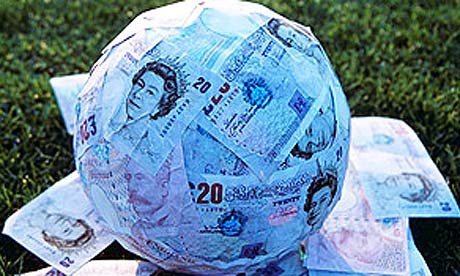 Deloitte recently published its 24th Annual Review of Football Finance and it contained some surprising results. Historically, most teams in the English Premier League (EPL) have made accounting losses with any increases in revenues being offset by higher wage costs. However, this report found that in 2013–14 most teams in the EPL actually made accounting profits.
Deloitte recently published its 24th Annual Review of Football Finance and it contained some surprising results. Historically, most teams in the English Premier League (EPL) have made accounting losses with any increases in revenues being offset by higher wage costs. However, this report found that in 2013–14 most teams in the EPL actually made accounting profits.
The Deloitte’s review reported that the combined operating profits of clubs in the EPL increased from £82 million in 2012–13 to £614 million on 2013–14 – an enormous increase of 649%. Nearly all of the teams (19 out of 20) in the league made an operating profit while 14 also reported pre-tax profits. Dan Jones, head of Deloitte’s Sports Business Group, commented that:
“The change in club profitability in 2013–14 was more profound than anything we could have forecast.”
Why has the profitability of teams in the EPL suddenly improved so dramatically? One important factor was the significant increase in revenue. The combined income of the teams was £3.26 billion in 2013–14 – an increase of £735 million, or 29% on the previous year. Although match-day and commercial revenue both increased, the majority of this growth in income (nearly 80%) came from the sale of broadcast rights. The 2013–14 season was the first year of a new three-year contract that raised over £1.7 billion per year from the sale of these rights in both the UK and overseas.
However, clubs in the EPL have received big increases in revenue from TV deals before and still made substantial accounting losses. For example, the broadcasting contract that ran from 2010–13 generated over £1.1 billion per season – a £243 million per annum increase on the previous deal. Significantly, in the first year of this deal (2010–11), 81% of this increase in revenue went straight into higher player salaries, whereas in 2013–14 this figure was only 16%. The ratio of wages to turnover also fell from 71% in 2012–13 to 58% in 2013–14
So why did a smaller proportion of the increase in revenue go to the players compared with previous years? The explanation appears to be the impact of two new controls and regulations that were implemented by the EPL at the beginning of the 2013–14 season.
One of these has received considerable media attention and is similar to UEFA’s Financial Fair Play regulations. The Profitability and Sustainability Rules allow the clubs to make a maximum cumulative loss of £105 million over three seasons before having to face sanctions from the league. The size of the permissible loss is significantly higher than in the UEFA regulations.
The other control that has received far less attention is called Short-Term Cost Control (STCC). This regulation places limits on the extent to which clubs can increase their total wage bill. It operates from 2013–14 to 2015&ndash16: i.e. it covers the same three years as the current TV deal. For the 2013–14 season it worked in the following way.
If teams had a wage bill of less than £52 million they faced no restrictions on their spending on players’ salaries. Only Crystal Palace (£46 million) and Hull City (£43 million) fell into this category. Unsurprisingly, the five biggest spending clubs, Man Utd, Man City, Chelsea, Arsenal and Liverpool, had much greater wage bills of £215m, £205m, £192m, £166m and £144m respectively.
Any of the 18 teams that exceeded the £52m limit would still not face sanctions if their wage bill increased by £4 million or less. For example, Stoke City’s wage bill only increased from £60m to £61m, while Tottenham Hotspur’s increased from £96m to £100m. Some clubs actually managed to reduce their total wage bill, including the champions, Manchester City, which managed to lower its from £233m to £215m.
However, there were still 12 teams with a total wage bill that was greater than £52 million in 2013–14 and which had increased by more than £4 million on the previous year. For these teams not to face any sanctions, they had to prove to the EPL that any of the increase above £4 million was either due to player contracts entered into before January 2013 or could by financed from the following two sources.
• Club Own Revenue Uplift
• Profit from player transfers
Whereas the profit from player transfers is straightforward, the ‘Club Own Revenue Uplift’ requires some explanation, as it excludes a very important part of teams’ incomes – Central Fund payments.
Some revenues earned by clubs in the EPL are referred to as ‘Central Fund payments’. These are, in effect, income payments from money that is raised centrally by the EPL on behalf of the clubs and then distributed to the teams using an agreed formula. The majority of the revenue generated under this category is from the broadcast deals, although some commercial income, such as the sponsorship of the league, also falls under this category. For some teams the money raised from Central Fund payments makes up the majority of their revenue.
‘Club Own Revenue’ in STCC calculations refers to all revenues other than those from Central Fund payments. This includes a number of income streams that the club has more direct control over. They include:
• Gate money/other match-day revenue
• Commercial deals negotiated by the individual club
• Income from playing in European competitions, including TV revenue.
The uplift refers to increases in revenue from these sources compared to 2012–13.
For example, assume a club has made no profit from its transfer dealing and did not enter into any significant player contracts prior to January 2013. If this club’s wage bill increased from £100m in 2012–13 to £110m in 2013–14 then it would have to provide evidence to show that £6m of this increase could be financed from growth in its Club Own Revenue. In other words, it would have to demonstrate how its income from gate money, commercial deals and playing in Europe was at least £6m higher in 2013–14 than it had been in 2012–13.
It will be interesting to see if (1) the profitability of the clubs continues to improve in future years and (2) the STCC regulations are extended when the new broadcast deal comes into effect in 2016–17.
The EPL Proves Cost Control Works The Judge 13 (4/6/15)
English Premier League clubs made more revenue than Spain and Italy’s clubs combined UK Business Insider, Lianna Brinded (4/6/15)
Premier League football club revenues and profits soar BBC News, Bill Wilson (4/6/15)
Deloitte Premier League list: Clubs’ revenue boom to £3.3billion as Tottenham record highest ever pre-tax profits after Gareth Bale transfer The Independent, Joanna Bourke (4/6/15)
Annual Review of Football Finance 2015 Premier League clubs generate over £3bn revenue in season of records Deloitte (4/6/15)
Premier League top of the rich list with record income of £3.26bn The Guardian, David Conn (4/6/15)
Questions
- What is the difference between an operating profit and a pre-tax profit?
- If a club reports that it is making an accounting profit, does this mean that it must be making an economic profit? Explain your answer.
- Give some examples of the economic costs of running a football club that might not be included in accounting calculations of profit.
- How is the profit/loss from player transfers calculated?
- Explain why the current rules may give teams that play in European competitions a competitive advantage.
 At the G7 conference in Bavaria on 7 and 8 June 2015, it was agreed to phase out the use of fossil fuels by the end of the century. But despite this significant objective, there were no short-term measures put in place to start on the process of achieving this goal. Nevertheless, the agreement contained commitments to further developments in carbon markets, elimination of fossil fuel subsidies, incentives for the development of green energy and support for developing countries in reducing hydrofluorocarbons.
At the G7 conference in Bavaria on 7 and 8 June 2015, it was agreed to phase out the use of fossil fuels by the end of the century. But despite this significant objective, there were no short-term measures put in place to start on the process of achieving this goal. Nevertheless, the agreement contained commitments to further developments in carbon markets, elimination of fossil fuel subsidies, incentives for the development of green energy and support for developing countries in reducing hydrofluorocarbons.
The agreement also sent a strong message to the 21st United Nations International Climate Change conference scheduled to meet in Paris from 30 November to 11 December 2015. The G7 communiqué states that binding rules would be required if the target was to be met.
The agreement should enhance transparency and accountability including through binding rules at its core to track progress towards achieving targets, which should promote increased ambition over time. This should enable all countries to follow a low-carbon and resilient development pathway in line with the global goal to hold the increase in global average temperature below 2°C.
But many environmentalists argue that a more fundamental approach is needed. This requires a change in the way the environment is perceived – by both individuals and politicians. The simple  selfish model of consumption to maximise consumer surplus and production to maximise profit should be rejected. Instead, the environment should be internalised into decision making.
selfish model of consumption to maximise consumer surplus and production to maximise profit should be rejected. Instead, the environment should be internalised into decision making.
What is more, there should be an integral ecology which brings together a wide range of disciplines, including economics, in analysing the functioning of societies and economies. Rather than being seen merely as a resource to be exploited, respect and care for the environment should be incorporated into our whole decision-making process, along with protecting societies and cultures, and rejecting economic systems that result in a growing divide between rich and poor.
In his latest encyclical, On care for our common home, Pope Francis considers integral ecology, not just in terms of a multidiciplinary approach to the environment but as an approach that integrates the objectives of social justice and care for the environment into an overarching approach to the functioning of societies and economies. And central to his message is the need to change the way human action is perceived at a personal level. Decision making should be focused on care for others and the environment not on the selfish pursuit of individual gain.
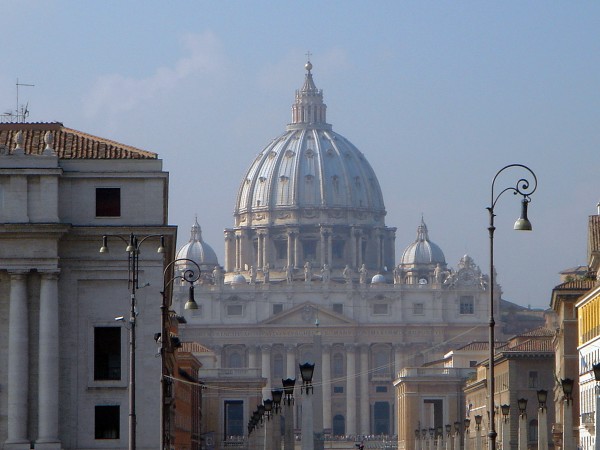 With a change in heart towards other people and the environment, what would be seen as externalities in simple economic models based on rational self-interested behaviour become internal costs or benefits. Care and compassion become the drivers for action, rather than crude self interest.
With a change in heart towards other people and the environment, what would be seen as externalities in simple economic models based on rational self-interested behaviour become internal costs or benefits. Care and compassion become the drivers for action, rather than crude self interest.
A key question, of course, is how we get here to there; how society can achieve a mass change of heart. For religious leaders, such as the Pope, the approach centres on spiritual guidance. For the secular, the approach would probably centre on education and the encouragement for people to consider others in their decision making. But, of course, there is still a major role for economic instruments, such as taxes and subsidies, rules and regulations, and public investment.
Articles
G7 leaders agree to phase out fossil fuels by end of centuryEU Observer, Peter Teffer (8/6/15)
Integral Ecology Approach Links ‘Welfare of God’s People and God’s Creation’ Catholic Register (11/6/15)
President’s Corner Teilhard Perspective, John Grim (May 2015)
In his encyclical on climate change Pope Francis reveals himself to be a master of scientific detail Washington Post, Anthony Faiola, Michelle Boorstein and Chris Mooney (18/6/15)
Pope Francis Calls for Climate Action in Draft of Encyclical New York Times, Jim Yardley (15/6/15)
Pope Francis letter on climate change leaked: Draft Vatican encyclical released three days early Independent, Kashmira Gander and Michael Day (15/6/15)
The Pope is finally addressing the gaping hole in the Judaeo-Christian moral tradition Independent, Michael McCarthy (15/6/15)
Pope Francis warns of destruction of Earth’s ecosystem in leaked encyclical The Guardian, Stephanie Kirchgaessner and John Hooper (16/6/15)
Explosive intervention by Pope Francis set to transform climate change debate The Observer, John Vidal (13/6/15)
Pope Francis’ Leaked Encyclical Draft Attributes Climate Change To Human Activity Huffington Post, Antonia Blumberg (15/6/15)
Pope Francis’ Integral Ecology Huffington Post, Dave Pruett (28/5/15)
Videos
 Pope Francis: Climate change mostly man-made BBC News, Caroline Wyatt (18/6/15)
Pope Francis: Climate change mostly man-made BBC News, Caroline Wyatt (18/6/15)
 Pope urges action on global warming in leaked document BBC News, Chris Cook (16/6/15)
Pope urges action on global warming in leaked document BBC News, Chris Cook (16/6/15)
Questions
- What do you understand by ‘integral ecology’?
- Is an integrated approach to the environment and society consistent with ‘rational’ behaviour (a) in the narrow sense of ‘rational’ as used in consumer and producer theory; (b) in a broader sense of making actions consistent with goals?
- Can cost–benefit analysis be used in the context of an integrated and cross-disciplinary approach to the environment and society?
- What types of incentives would be useful in achieving the approach proposed by Pope Francis?
- Why do many companies publicly state that they pursue a policy of corporate responsibiliy?
- To what extent does it make sense to set targets for the end of this century?
- In what crucial ways might GDP need to be adjusted if it is to be used as a measure of the success of the approach to society, the economy and the environment as advocated by Pope Francis?
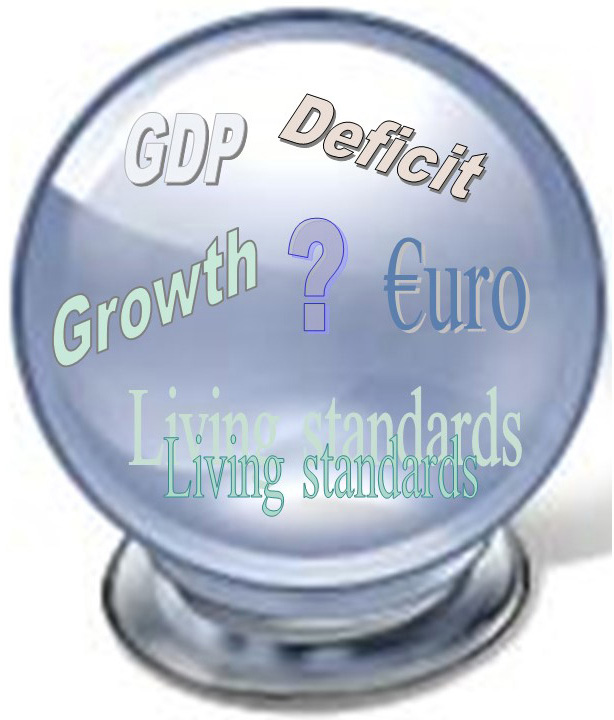 With worries about Greek exit from the eurozone, with the unlikelihood of further quantitative easing in the USA and the UK, with interest rates likely to rise in the medium term, and with Chinese growth predicted to be more moderate, many market analysts are forecasting that stock markets are likely to fall in the near future. Indeed, markets are already down over the past few weeks. Since late April/early May, the FTSE is down 4.5%; the German DAX index is down 7.0%; the French CAC40 index is down 6.9%; and the US Dow Jones index is down 2.3%. But does this give us an indication of what is likely to happen over the coming months?
With worries about Greek exit from the eurozone, with the unlikelihood of further quantitative easing in the USA and the UK, with interest rates likely to rise in the medium term, and with Chinese growth predicted to be more moderate, many market analysts are forecasting that stock markets are likely to fall in the near future. Indeed, markets are already down over the past few weeks. Since late April/early May, the FTSE is down 4.5%; the German DAX index is down 7.0%; the French CAC40 index is down 6.9%; and the US Dow Jones index is down 2.3%. But does this give us an indication of what is likely to happen over the coming months?
If stock markets were perfectly efficient, then all possible information about the future will already have been taken into account and will all be reflected in current share prices. It would be impossible to ‘get ahead of the game’.
It is only if market participants have imperfect information and if you have better information than other people that you can are likely to predict correctly what will happen. Even then, the markets might be buffeted by random and hence unpredictable shocks.
 Some people correctly predicted things in the past: such as crashes or booms. But in many cases, this was luck and their subsequent predictions have proved to be wrong. When financial advisers or newspaper columnists give advice, they are often wrong. If they were reliably right, then people would follow their advice and markets would rapidly adjust to their predictions.
Some people correctly predicted things in the past: such as crashes or booms. But in many cases, this was luck and their subsequent predictions have proved to be wrong. When financial advisers or newspaper columnists give advice, they are often wrong. If they were reliably right, then people would follow their advice and markets would rapidly adjust to their predictions.
If Greece were definitely to exit the euro, if interest rates were definitely to rise in the near future, if it became generally believed that stock markets were overvalued, then stock markets would probably fall. But these things may not happen. After all, people have been predicting a rise in interest rates from their ultra-low levels for many months – and it hasn’t happened yet, and may not happen for some time to come – but it may!
If you want to buy shares, you might just as well buy them at random – or randomly sell any you already have. As Tetlock says, quoted in the Nasdaq article:
“Even the most astute observers will fail to outperform random prediction generators – the functional equivalent of dart-throwing chimps.”
And yet, people do believe that they can predict what is going to happen to stock markets – if not precisely, then at least roughly. Are they deluded, or can looking calmly at likely political and economic events put them one step ahead of other people who perhaps behave more reactively and emotionally?
Bond rout spells disaster for stock markets as global credit kraken awakens The Telegraph, John Ficenec (14/6/15)
Comment: Many imponderables for markets The Scotsman, Bill Jamieson (14/6/15)
How Ignoring Stock Market Forecasts Will make you a better investor Forbes, Ky Trang Ho (6/6/15)
The Predictions Racket Nasdaq, AdviceIQ, Jason Lina (21/5/15)
Questions
- Why may a return of rising interest rates lead to a ‘meltdown in equity prices’? Why might it not?
- Why have bond yields fallen dramatically since 2008?
- Why are bond yields rising again now and what significance might this have (or have had) for equity markets?
- Why may following the crowd often lead to buying high and selling low?
- Is there an asymmetry between buying and selling behaviour in stock markets?
- Will ignoring stock market forecasts make people better investors?
- “The stock market prices suggest that investors believe both the Federal Reserve and the Bank of England are bluffing about raising interest rates. That may be so, but it is an extremely risky game of chicken for investors to play.” Explain and discuss.
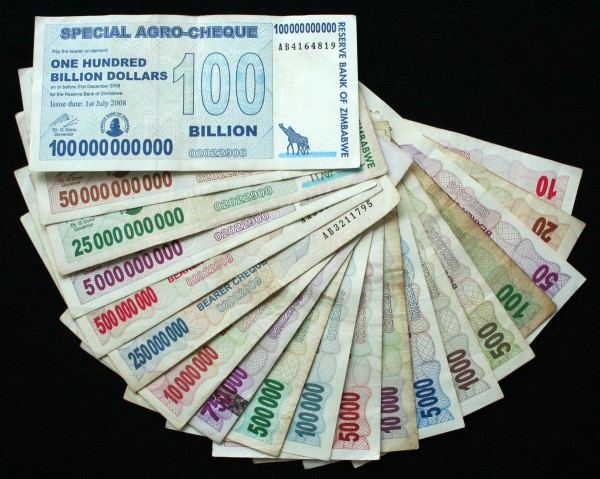 In the late 2000s, Zimbabwe experienced hyperinflation. As a post on this site in January 2009 said, two estimates of the inflation rate were made: one of 5 sextillion per cent (5 and 21 zeros); the other of 6.5 quindecillion novemdecillion per cent (65 and 107 zeros). In January 2009, in a last attempt to save the Zimbabwean currency, a new series of banknotes was issued, including a Z$100 trillion note.
In the late 2000s, Zimbabwe experienced hyperinflation. As a post on this site in January 2009 said, two estimates of the inflation rate were made: one of 5 sextillion per cent (5 and 21 zeros); the other of 6.5 quindecillion novemdecillion per cent (65 and 107 zeros). In January 2009, in a last attempt to save the Zimbabwean currency, a new series of banknotes was issued, including a Z$100 trillion note.
Prices were typically being adjusted at least twice a day and people had to carry large bags of money around even to buy a couple of simple items. The currency was virtually worthless. As the Guardian article below states:
Hyperinflation in Zimbabwe left pensions, wages and investments worthless and spread poverty as everyday items became unaffordable. It also caused severe cash shortages, because the government could not afford to print bank notes to keep pace with inflation.
The solution was to allow other currencies, mainly the US dollar and the South African rand, to be used alongside the local currency. Although the Zimbabwean currency was still legal tender, it effectively went out of use. Prices stabilised and since then inflation has been in single figures.
 But many people still have stocks of the virtually worthless old currency, either in cash or in savings accounts. The Zimbabwean government has now said that it will exchange Zimbabwean dollar notes for US dollars at the rate of US$1 = Z$250tn (250,000,000,000). People have until September to do so. Up to now, they have mainly been used to sell as souvenirs to tourists! For people with Zimbabwean dollars in their bank accounts, they will get a minimum of US$5. For amounts beyond Z$175,000tn they will get an additional US dollar for each Z$35,000tn.
But many people still have stocks of the virtually worthless old currency, either in cash or in savings accounts. The Zimbabwean government has now said that it will exchange Zimbabwean dollar notes for US dollars at the rate of US$1 = Z$250tn (250,000,000,000). People have until September to do so. Up to now, they have mainly been used to sell as souvenirs to tourists! For people with Zimbabwean dollars in their bank accounts, they will get a minimum of US$5. For amounts beyond Z$175,000tn they will get an additional US dollar for each Z$35,000tn.
Historical examples of hyperinflation
As case study 15.5 in Economics 9e’s MyEconLab points out, several countries experienced hyperinflation after the First World War. In Austria and Hungary prices were several thousand times their pre-war level. In Poland they were over 2 million times higher, and in the USSR several billion times higher.
Germany in the 1920s
But even these staggering rates of inflation seem insignificant beside those of Germany. Following the chaos of the war, the German government resorted to printing money, not only to meet its domestic spending requirements in rebuilding a war-ravaged economy, but also to finance the crippling war reparations imposed on it by the allies in the Treaty of Versailles.
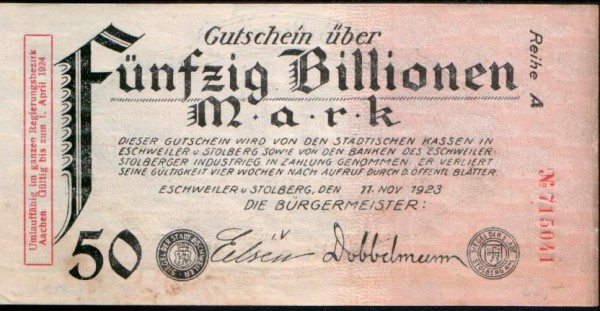 From mid 1921 the rate of monetary increase soared and inflation soared with it. By autumn 1923 the annual rate of inflation had reached a mind-boggling 7,000,000,000,000 per cent! As price increases accelerated, people became reluctant to accept money: before they knew it, the money would be worthless. People thus rushed to spend their money as quickly as possible. But this in turn further drove up prices. (The note shown above is in old billions, where a billion was a million million. So the note was for 50,000,000,000,000 marks.)
From mid 1921 the rate of monetary increase soared and inflation soared with it. By autumn 1923 the annual rate of inflation had reached a mind-boggling 7,000,000,000,000 per cent! As price increases accelerated, people became reluctant to accept money: before they knew it, the money would be worthless. People thus rushed to spend their money as quickly as possible. But this in turn further drove up prices. (The note shown above is in old billions, where a billion was a million million. So the note was for 50,000,000,000,000 marks.)
For many Germans the effect was devastating. People’s life savings were wiped out. Others whose wages were not quickly adjusted found their real incomes plummeting. Many were thrown out of work as businesses, especially those with money assets, went bankrupt. Poverty and destitution were widespread.
By the end of 1923 the German currency was literally worthless. In 1924, therefore, it was replaced by a new currency – one whose supply was kept tightly controlled by the government.
Serbia and Montenegro 1993–5
After the break-up of Yugoslavia in 1992, the economy of the remaining part of Yugoslavia (Serbia and Montenegro) collapsed. The government relied more and more on printing money to finance public expenditure. Prices soared.
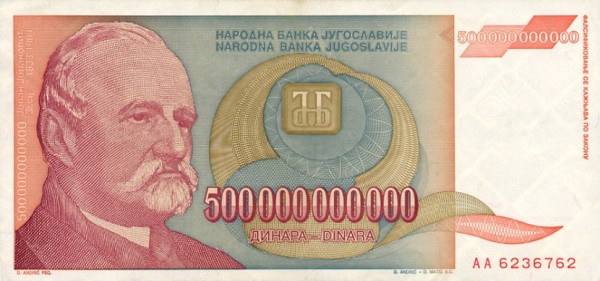 The government attempted to control the inflation by imposing price controls. But these simply made production unprofitable and output fell further. The economy nosedived. Unemployment exceeded 30 per cent.
The government attempted to control the inflation by imposing price controls. But these simply made production unprofitable and output fell further. The economy nosedived. Unemployment exceeded 30 per cent.
In October 1993, the government created a new currency, the new dinar, worth one million old dinars. In other words, six zeros were knocked off the currency. But this did not solve the problem. Between October 1993 and January 1994, prices rose by 5 quadrillion per cent (5 and fifteen zeros). Normal life could not function. Shops ran out of produce; savings were wiped out; barter replaced normal market activity.
At the beginning of January 1994 a ‘new new dinar’ was introduced, worth 1 billion new dinars. On 24 January this was replaced by a ‘novi dinar’ pegged 1 to 1 against the Deutsche Mark. This was worth approximately 13 million new new dinars. The novi dinar remained pegged to the Deutsche Mark and inflation was quickly eliminated.
Articles
Zimbabweans get chance to swap ‘quadrillions’ for a few US dollars The Guardian (13/6/15)
 175 Quadrillion Zimbabwean Dollars Are Now Worth $5 Bloomberg, Godfrey Marawanyika and Paul Wallace (11/6/15)
175 Quadrillion Zimbabwean Dollars Are Now Worth $5 Bloomberg, Godfrey Marawanyika and Paul Wallace (11/6/15)
Zimbabwe is paying people $5 for 175 quadrillion Zimbabwe dollars Washington Post, Matt O’Brien (12/6/15)
Zimbabwe dollars phased out BBC News Africa (12/6/15)
Zimbabwe ditches its all but worthless currency Financial Times (12/6/15)
Zeroing in Thomson Reuters, Breaking News, Edward Hadas (12/6/15)
Old articles
Could inflation fell Mugabe? BBC News (28/7/08)
ZIMBABWE: Inflation at 6.5 quindecillion novemdecillion percent IRIN (21/1/09)
The Worst Episode of Hyperinflation in History: Yugoslavia 1993-94 Roger Sherman Society, Thayer Watkins (31/7/08)
Questions
- Why have several governments in the past been prepared to allow hyperinflation to develop?
- Itemise the types of cost imposed on people by hyperinflation.
- Does anyone gain from hyperinflation?
- What are the solutions to hyperinflation?
- What difficulties are there in eliminating hyperinflation? What costs are imposed on people in the process?
- Why might the causes of hyperinflation be described as always political?
 A Greek exit from the euro (dubbed ‘Grexit’) is seen as undesirable by most Greeks and by most politicians in the rest of Europe. The optimum for both sides collectively would be a compromise, which saw more modest cuts by Greece and the eurozone remaining intact. By both sides seeking to maximise their own position, the Nash equilibrium is certainly not the best outcome.
A Greek exit from the euro (dubbed ‘Grexit’) is seen as undesirable by most Greeks and by most politicians in the rest of Europe. The optimum for both sides collectively would be a compromise, which saw more modest cuts by Greece and the eurozone remaining intact. By both sides seeking to maximise their own position, the Nash equilibrium is certainly not the best outcome. But while the endgame is being played out by politicians, people in Greece are suffering. Policies of severely depressing aggregate demand to turn a large budget deficit into a primary budget surplus have led to the economy shrinking by 26%, overall unemployment of 27% and youth unemployment of over 60%. The Greeks truly believe themselves to be stuck between a rock and a hard place.
But while the endgame is being played out by politicians, people in Greece are suffering. Policies of severely depressing aggregate demand to turn a large budget deficit into a primary budget surplus have led to the economy shrinking by 26%, overall unemployment of 27% and youth unemployment of over 60%. The Greeks truly believe themselves to be stuck between a rock and a hard place.











